第13章
The passages also are different through which the solid and liquid excreta pass out in all the vivipara.Wherefore both males and females in this class all have a part whereby the urine is voided, and this serves also for the issue of the semen in males, of the offspring in females.This passage is situated above and in front of the passage of the solid excreta.The passage is the same as that of the solid nutriment in all those animals that have no penis, in all the ovipara, even those of them that have a bladder, as the tortoises.For it is for the sake of generation, not for the evacuation of the urine, that the passages are double; but because the semen is naturally liquid, the liquid excretion also shares the same passage.This is clear from the fact that all animals produce semen, but all do not void liquid excrement.Now the spermatic passages of the male must be fixed and must not wander, and the same applies to the uterus of the female, and this fixing must take place at either the front or the back of the body.To take the uterus first, it is in the front of the body in vivipara because of the foetus, but at the loin and the back in ovipara.All animals which are internally oviparous and externally viviparous are in an intermediate condition because they participate in both classes, being at once oviparous and viviparous.
For the upper part of the uterus, where the eggs are produced, is under the hypozoma by the loin and the back, but as it advances is low at the abdomen; for it is in that part that the animal is viviparous.In these also the passage for solid excrement and for copulation is the same, for none of these, as has been said already, has a separate pudendum.
The same applies to the passages in the male, whether they have testes or no, as to the uterus of the ovipara.For in all of them, not only in the ovipara, the ducts adhere to the back and the region of the spine.For they must not wander but be settled, and that is the character of the region of the back, which gives continuity and stability.Now in those which have internal testes, the ducts are fixed from the first, and they are fixed in like manner if the testes are external; then they meet together towards the region of the penis.
The like applies to the ducts in the dolphins, but they have their testes hidden under the abdominal cavity.
We have now discussed the situation of the parts contributing to generation, and the causes thereof.